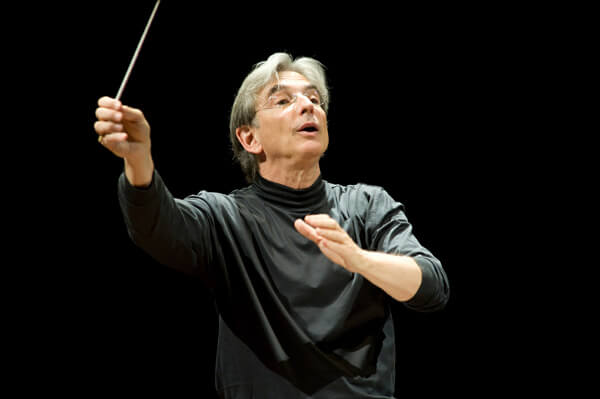This belated review covers an event prior to the negotiations breakdown that happened in San Francisco. We are happy to hear that—as of March 29—the negotiations have resumed, and we hope that a fair solution for both parties will be found to ensure the future of this wonderful musical institution.
-Thomas Deneuville, Ed.
 I was initially somewhat nervous about the San Francisco Symphony’s semi-staged production of Henrik Ibsen’s Peer Gynt in January (well before contract negotiations between SFS musicians and management broke down, resulting in the current strike). The three-day run of performances, January 17-19, 2013 in Davies Symphony Hall, featured a compendium of music: Edvard Grieg’s familiar incidental music intermixed with more contemporary works by Alfred Schnittke and Robin Holloway. The staging incorporated acting, singing, video projection, and dance. With that many things going on, the number of chances that something could go wrong was enormous. By the time we got to intermission however, I was hooked. For the most part, everything fit together really well. The acting was convincing (even though there was an accident with a costume that resulted in a shirtless Peer at one point), the music fit together quite well, and the video projection was just interesting enough without overpowering what was going on on stage.
I was initially somewhat nervous about the San Francisco Symphony’s semi-staged production of Henrik Ibsen’s Peer Gynt in January (well before contract negotiations between SFS musicians and management broke down, resulting in the current strike). The three-day run of performances, January 17-19, 2013 in Davies Symphony Hall, featured a compendium of music: Edvard Grieg’s familiar incidental music intermixed with more contemporary works by Alfred Schnittke and Robin Holloway. The staging incorporated acting, singing, video projection, and dance. With that many things going on, the number of chances that something could go wrong was enormous. By the time we got to intermission however, I was hooked. For the most part, everything fit together really well. The acting was convincing (even though there was an accident with a costume that resulted in a shirtless Peer at one point), the music fit together quite well, and the video projection was just interesting enough without overpowering what was going on on stage.

Conductor Michael Tilson Thomas (photo credit: michaeltilsonthomas.com)
Although this production of Peer Gynt is somewhat scaled back from the original sprawling 40-scene play, it nonetheless employed the full San Francisco Symphony and Chorus (directed by Michael Tilson Thomas and Ragnar Bohlin respectively). The production was directed by James Darrah, with video projections by Adam Larson and lighting design by Cameron Jaye Mock. The stellar cast included Ben Huber as Peer Gynt, Rose Portillo as Ase, Joélle Harvey as Solveng, and Peabody Southwell as the Woman in Green. The entire cast performed quite well, and the singing was excellent across the board (although amplified at a higher level than I’m used to for classical music events). Additionally, Ingrid was portrayed by dancer Janice Lancaster Larsen. Fitting all of these people onto the stage in Davies Symphony Hall was an achievement – the orchestra took up the bulk of the room, leaving only a small sliver of stage for the actors and singers to move about. Despite this challenge, the action never seemed cramped. The video projects, which were intended to portray the Norwegian landscape, added a sense of depth and height that counteracted the physically small and minimal set.
In brief, Peer Gynt is the tale of a wayward miscreant who fails to use his life for anything worthwhile. He lies to his mother, kidnaps his rival’s bride from their wedding, is chased out of town, cavorts with trolls, conceives a half-troll son, abandons the only woman who was ever faithful to him, eventually becomes wealthy through the trading of slaves and pagan images, and in general manages to get on the wrong side of everything. He is eventually tracked down by the Button-Molder, who melts disused souls together for reuse by those who will actually do something with their life. Peer hunts for character witnesses to prove that he has in fact done something with his life, and eventually realized the beauty of the world he is about to lose.
In the first scene, Peer (who wandered on stage and sat staring into space well before the production got underway) tells his mother a fantastic tale of a great reindeer he hunted in his imagination. She, growing tired of his lies, tells him his old sweetheart is to be married the following day. This entire scene takes place to Schnittke’s Prolog, which is of a much darker quality than the Grieg incidental music most audience members are familiar with. While only a few selections by Schnittke and Holloway were used, those that were had enough presence to give the overall feeling that the Grieg appeared for brief moments amid the stormier music of the other two composers. Clearly I wasn’t the only one who felt this way, because several of the more common-practice-period-appreciating audience members started mumbling about how they thought there was supposed to be more Grieg, and less of that “other stuff.”

Mezzo-soprano Peabody Southwell (photo credit: peabodysouthwell.com)
One incredibly memorable use of Grieg’s music was the point in the fourth scene, during which the troll king and his minions interrupt Peer getting it on with the “Woman in Green” (who turns out to be the troll king’s daughter). The extremely realistic mimed sex was perfectly in time with the music, and the un-pitched yells in the chorus punctuating the music added a truly wild “note” to the already fevered pitch of the music and acting.
Practically every person with a habit of going to symphony concerts has heard Greig’s incidental music for Peer Gynt, or at least several movements from the orchestral suites. Alfred Schnittke is less well-known than Grieg, but practically a household name for fans of new music. British composer Robin Holloway was new to me, as was his portion of the music for tonight’s production. This was in fact the first performance of the Ocean Voyage section of his music for Peer Gynt. Holloway calls for a huge orchestra with the addition of piano, celesta, two harps, and a wild battery of percussion including flexatones, anvil, train whistles, iron chains, sizzle cymbals, wind machine, as well as all the usual suspects.
All in all, I was quite impressed with how the San Francisco Symphony and Chorus and the stellar cast of actors, singers, and dancer pulled everything together into a single unified work. So many small details working together made the highly complex production fit together as one unified work.
–
Kelsey Walsh is a pianist and currently resides in San Francisco. Follow her on twitter: @kwpianist.























